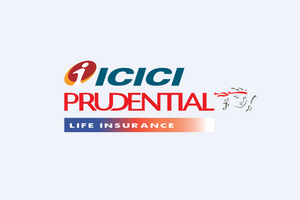What Is Investing And What Does It Mean? Learn About Several Investment Options.
Table of Contents
Investing is the act of allocating resources, usually money, with the expectation of generating an income or profit. You can invest in endeavors, such as using money to start a business, or in assets, such as purchasing real estate in hopes of reselling it later at a higher price.
Risk and return go hand-in-hand in investing; low risk generally means low expected returns, while higher returns are usually accompanied by higher risk. At the low-risk end of the spectrum are basic investments such as Certificates of Deposit (CDs); bonds or fixed-income instruments are higher up on the risk scale, while stocks or equities are regarded as riskier. Commodities and derivatives are generally considered to be among the riskiest investments. One can also invest in something practical, such as land or real estate, or delicate items, such as fine art and antiques.
Why Is Investing Better Than Saving?
Investments hold the key to an investor’s future. They help to bridge the gap between their dreams and reality. Following are some of the benefits of investing:
-
To reach your financial goals:
Be it purchasing a house or buying a car, or paying for your child’s education or marriage, or even planning for your retirement, investing can help you to meet your financial goals and objectives. Investing your capital is the most optimum way to achieve your long-term goals.
-
To beat inflation:
Investing your money also helps you to beat inflation. If you choose not to invest and rather keep your money in a regular savings account, your money’s purchasing power may decline over time due to inflation. Thus, to insure your money’s worth, it makes sense to invest in financial products that have the potential to fetch inflation-beating returns.
-
To earn significant returns:
Investment avenues such as stocks or mutual funds have the potential to fetch significantly higher returns than a savings account or bank fixed deposits.
Different Types of Investments
Investments generally fall under two broad umbrellas – growth-oriented investments and fixed-income investments. A growth-oriented investment option aims at increasing the value of the capital over time, whereas a fixed-income investment option aims at providing a steady (and sometimes rising) stream of income that can either be paid to the investors or re-invested while seeking to maintain the original value of the investment.
Let’s understand the different types of investments under these two investment styles:
1. Mutual fund Investment
Mutual funds are financial instruments that pool the money from various investors to invest in securities such as stocks (equities), bonds, money market instruments, etc. Returns on mutual fund investments are based on the market performance of the fund’s underlying assets. Investors can invest in mutual funds either via SIP (Systematic Investment Plan) or the lump sum mode.
According to the risk profile, investment horizon, and financial goals, an investor can choose from different types of mutual funds available to them. Largely there are six types of mutual funds, namely growth or equity funds, liquid or money market funds, fixed-income or debt funds, hybrid or balanced funds, index funds, and tax-saving funds. Mutual funds help investors in achieving their financial goals, be it short-term or long-term.
2. Stocks
Also known as shares or equities, stocks are among the most popular growth-oriented investments. When you purchase a share, you become part-owner of a publicly-traded company and stand to gain a part of the profits. The risk-reward ratio with equity investments is often higher than most other forms of investment.
3. Bonds
Also known as fixed-income securities, a bond is a debt instrument that represents a loan given by an investor to a company or the government. When you buy a bond, you allow the bond issuer to issue you a fixed interest rate in exchange for using your capital. Examples of bonds include Treasury bills, municipal bonds, corporate bonds, government securities, etc.
4. Exchange Traded Funds (ETFs)
Exchange-traded funds, or ETFs, are a collection of investments such as shares, bonds, money-market instruments, etc., that track an underlying index. They are a mash-up of different investment avenues that offer the best attributes of the two assets – mutual funds and stocks. ETFs are traded on the stock exchanges and are quite like mutual funds in terms of their regulation, structure, and management. However, one of the main differences between ETFs and mutual funds is that the former can be actively traded on the bourses at any given time during the day, which allows investors to take advantage of real-time price differentials. On the contrary, mutual funds, whether active or passive, can only be bought/sold at the close of the trading day.
5. Fixed deposits
Bank fixed deposits (FDs) are among the safest investment options available to investors. They are offered by banks and other NBFCs and allow investors to park their idle cash for a specific duration and for a fixed rate of interest. The interest rate is pre decided and unaffected by market fluctuations, which ensures greater safety of the investments. From the ease of flexibility to various options offered to an investor, fixed deposits are a boon to risk-averse investors.
6. Retirement planning
Saving for retirement as well as managing that income once you retire are two of the most critical aspects of financial planning. There are several types of retirement plans available to investors. Some of the most common investment options for retirement planning are Senior Citizens Savings Scheme (SCSS), National Pension System (NPS), Public Provident Fund (PPF), bank fixed deposits, etc. An investor looking to save for retirement might consider opting for safer investment avenues if they are nearing their retirement.
7. Cash and cash equivalents
Cash equivalents strive to protect an investor’s original investment while also offering high liquidity. However, they tend to offer the lowest potential returns than other investment types. While they do not generally offer capital growth, they have the potential to deliver regular returns. They can also play an important role in protecting your capital and reducing the risk of your investment portfolio to a great extent. Examples of cash equivalents include time deposits, overnight funds, liquid funds, high-interest savings accounts, bank accounts, etc.
8. Real estate Investment
The real estate sector holds huge prospects for several industries such as hospitality, retail, commercial housing, manufacturing, and much more. Investors have the option to invest in commercial or residential properties or even real estate mutual funds to earn significant returns on their investments. Timing is a crucial aspect when one considers investing in real estate. One should be mindful that real estate investments can be highly illiquid, i.e. it might get challenging to sell the property quickly in case of an urgent monetary requirement.
9. Provident funds
Provident funds (including Employee Provident Fund and Public Provident Fund) constitute a significant part of your retirement corpus. Provident fund is a mandatory, government-sponsored retirement scheme that aims at providing employees with a lump sum payment when the employee resigns or during retirement.
10. Insurance
Insurance products are often a part of a financial plan. They come in various forms like term insurance, life insurance, endowment plans, child plans, etc. Insurance products are developed to meet particular objectives, for instance, life insurance is designed to meet your expenses as you age whereas term insurance is designed to aid your beneficiaries in the unfortunate event of your death.
Conclusion
Each type of investment offers a varying level of risk-reward ratio. However, risk and returns shouldn’t be the only considerations that determine what types of investment products you choose. An investor should also consider factors like asset allocation, fees, past performance, liquidity, etc. Your investment planning should ensure that your portfolio aligns with your risk tolerance, investment goals, and time horizon.
Also read - Some Considerations Before Purchasing A Money-Back Guarantee









































